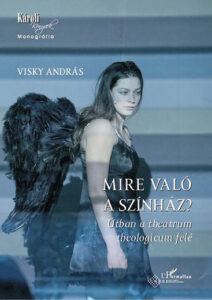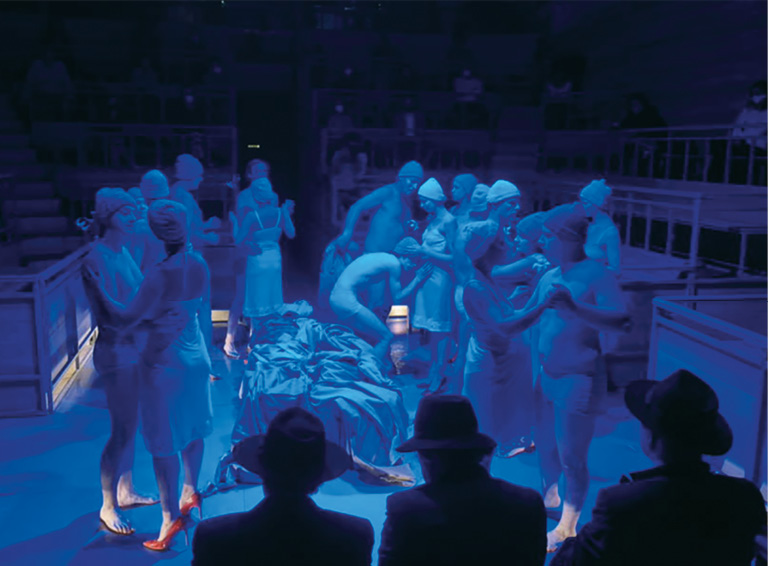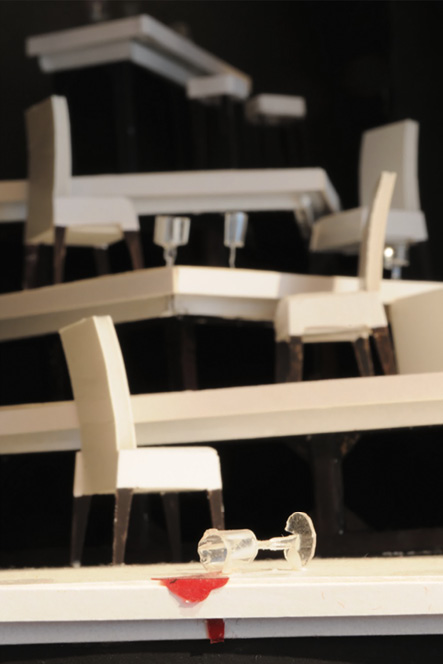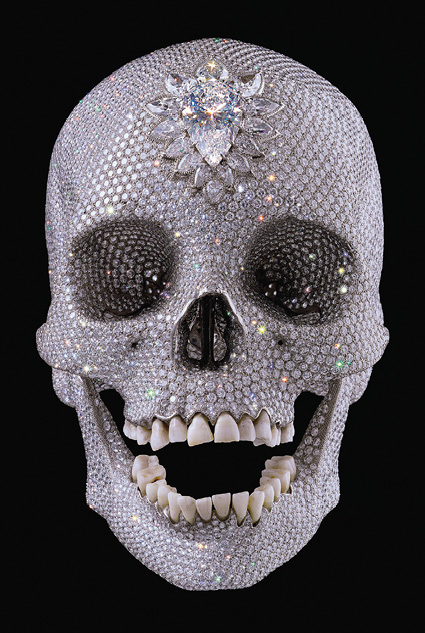As the author emphasises in his preface to the volume, the phrase “theatrum theologicum” is even older: it was originally a term coined by Daniel Fesselius, a little-known post-Reformation thinker, who first used it in his book Theatrum theologico-politico-historicum, which was published in 1668, “offering an ideological, political and historical explanation of the disappearance of the secular powers, and the vicissitudes of their fate, in the theatre of theological discourse” (Visky 2020, 13). As his starting point, Fesselius used the well-known idea, restated by John Calvin, that the world is the theatrum gloriae Dei, that is, the theatre of God’s glory. “Among Calvin’s […] favourite figures of speech is to make the perfect mastery of divine creation and the scene of redemption, that is, the human world and history, seen as God’s ‘beautiful’, […] ‘glorious’ theatre, where man […] occupies the orchestra and there plays the spectacle of divine goodness and wisdom […] to the delight of men and God” (Visky 2020, 13).

Figure 1. András Visky: The cover of the volume entitled What is Theatre for? On the way to the theatrum theologicum.
The term, therefore, was not originally used in a theatrical sense, but its introduction was first suggested by the author of this volume, when Melinda Gemza was writing her thesis at the Károli Gáspár Reformed University on the theatre of József Nagy and Romeo Castellucci, in the hope that this term would be of help in a comparative analysis of the performances of the two theatre artists (Visky 2020, 12). The mention of Castellucci’s name is no coincidence, as the author believes that the world-famous director is one of those contemporary artists who at the same time perceives theatre as a kind of divine question in our time. This volume claims that the theatrum theologicum also seems to describe Castellucci’s theatrical aesthetics in a prolific way, since the aforementioned question of God and the Western Christian theological tradition are also captured in an active way in his musical theatre performances and opera adaptations, among other things.1 “Visky mentions Romeo Castellucci as the greatest of his contemporaries to achieve such a beneficial success, despite the fact that he has not yet referred to Castellucci’s works in any of his writings” (Prontvai 2021, 636).
The work is divided into four sections in terms of both structure and genre: the first two parts contain the author’s studies and essays on a wide variety of subjects, which sometimes “have different motivations and factures, sometimes very divergent” (Visky 2020, 13). In other respects, however, what almost all of them have in common is an emphasis on the importance of the joint participation of performer and audience in the performance, in terms of the theatre’s contract with itself. The entire work of art is created by the recipient together with the creators and the performers, by becoming (or being) an active participant in the production, and this includes the question of post-performance interpretation.
This idea is known to be closely related to performativity, so it is no coincidence that the opening essay of the second part of the volume, entitled The Performance of the Spectator, which is in itself a telling title, discusses the importance of audience participation in the light of the performative shift that took place in the 1960s and 1970s. In the second paragraph, we can read the following about the significance of this shift, which was to radically change the logocentric tradition that had hitherto dominated the theatre:
“The innovative […] creators of contemporary theatre […] have moved from the work of art as a sacred object to be admired to the work of art as a process, with a consequent shift of emphasis [… ] to the co-presence and joint activity of spectators and performers, […] eliminating the romantic image of the artist – [the image of the creator as [a] ‘great man’, the demiurge], which […] provided the ideological basis for […] power games and institutional appropriations […]. Co-presence is not just an empty slogan […] but […] the demonstration […] of the common elements of the creative process” (Visky 2020, 91).
At the same time, the author of What is Theatre for? also emphases in this essay that the powerful pre-turnaround convention, which is mainly fed by the cult of operetta, which perceives theatre as something “‘not serious’ but entertaining, and therefore insignificant, a light ‘weekend’ event” (Visky 2020, 92), has exempted the creator from taking responsibility.2 The performative shift, however, makes it impossible to avoid this assumption of responsibility by drawing attention to the risk-taking of the spectator-participant, which carries more weight than one might at first think. To illustrate this assertion, the author cites Purcărete’s production of The King is Dying, in which the protagonist is chosen from among the audience, “indicating at the very beginning that the performance is not about the death of someone with whom we have nothing to do and who is above us” (Visky 2020, 92). Instead, the central element of the performance becomes the common presence and the “‘closeness of bodies’ (Erika Fischer-Lichte), or rather the ‘closeness of heavy bodies’ (Hans-Thies Lehmann)” (Visky 2020, 92), a gesture which, on the one hand, dissolves the obligatory reverence on the part of the audience, but which also entails an element of risk, since it forces them to experience a hitherto unknown mode of interpretation. It is no coincidence that the essay concludes with Abramović’s version of his manifesto entitled Art Vital, which has been translated into Hungarian by the author, in which the performance artist articulates what he considers to be the most important aspirations of contemporary art. According to Visky, its lines are particularly important in terms of the vulnerability of the audience (and not the artist), as they highlight that “spectator activity is not simply fashion and cheap provocation, but a demonstration and recognition that the author’s act does not separate, but connects us” (Visky 2020, 93).
It is perhaps no coincidence that the second essay that follows immediately begins with the well-known opening scene of Castellucci’s above-mentioned Divina Commedia, Inferno, when the director takes to the stage and introduces himself in the most direct way: “Je m’appelle Romeo Castellucci.”3 In Visky’s interpretation, everything in the space of the Papal Court in Avignon, turned into a stage, has an important added meaning: we are witnessing “that the once common knowledge of Western culture can only be assembled with great difficulty, and has become an archive of personal, fragmented bodily experiences” (Visky 2020, 94). Moreover, Vera Prontvai, the author of another review of the present monograph, relates this line of thought on the loss of identity in Western culture to poetic theatre, of which the author (Visky) is himself an important representative in Hungary: “The man of today, according to the philosophy of Beckett, Pilinszky, [and] Imre Kertész, can no longer tell the determining story of his own life, which goes back to universal roots, [and] language no longer carries the meanings that would recall it. Theatre turns to poetry in order to echo the Logos in space and to reconstruct a forgotten reality no longer recognised by modern man” (Prontvai 2021, 636).4
In Visky’s interpretation of the essay, the above contextual framework on the loss of identity, which is presented through the opening gesture of the Divina Commedia and is ultimately related to the question of performativity and, according to Prontvai, to the aesthetics of poetic theatre, points to the contract that the theatre has with itself, to its inherent social function, which is best manifested in the distinction between the notions of “benevolent” and “evil” success.
This is elaborated in the fourth and final part of the monograph, in a tract entitled Pseudo-Augustine’s On Success, which is written in the form of a dialogue, thus crystallising for the reader the primary mission and fundamental existence of theatre, as the author sees it, and at the same time summarising the texts of the preceding three parts of the volume, which are of different genres, and facilitating the possibility of (joint) further reflection. The work in question may have been composed after Augustine’s works Confessions and De musica (On Music), or it may be considered a direct continuation of the latter, given that on several occasions it takes passages from them verbatim, which Visky explains by the fact that in all probability Pseudo-Augustine may have memorised several passages, since Augustine was known to have intended the Confessions to be read out.
The last of the three chapters of the tract, published in this monograph, illustrates the difference between the two types of success through the example of the Ancient Roman parodist, St Genesius, who was later to die a martyr’s death. Genesius was widely known in his day as a popular actor and entertainer, and his fame led him to be invited to the house of Diocletian, the emperor who was notorious for introducing the Tetrarchy and the most brutal persecution of Christians. Since the ruler thought that the actor’s talent could be used for political purposes (as he saw the unity of the state threatened by the new religion), he asked him to create a performance in the Coliseum that would parody the liturgy. Genesius readily accepted the assignment, and therefore not only studied the text of the ceremony thoroughly, but also learned it word for word, and for the sake of the authenticity of the production, employed a real priest to conduct the ceremony. However, when the priest sprinkled holy water on Genesius, baptising him, he first collapsed, and then, shortly afterwards, regained consciousness and gave an impromptu speech about the effect it had on him, which caused many of the audience to enter the arena with Genesius, transfixed. As Diocletian then slaughtered Genesius, the priest and the audience members on stage, as well as the starved beasts, it is questionable whether we should talk about the success or failure of the career of the hitherto famous Genesius, while the tragic event itself is an example of the spectator becoming an actor, as discussed earlier.
Pseudo-Augustine’s tract offers general insights on success that merit reflection for all those seriously engaged in theatre (or any other related art form), regardless of the historical period, and we are encouraged to think further by the fact that the series of dialogues, which can be seen as a common organising element of the preceding loosely connected studies and essays, is placed at the end of the volume. “We hope that the three chapters of the last part, written in dialogues, does not close the volume, but on the contrary, will set the direction for a possible continuation” (Visky 2020, 13). The main characteristic of secular, in the words of Pseudo-Augustine simply “evil”, success, which is primarily concerned with profit, fame, and recognition, is that it is measurable: in the case of literary works, it corresponds to the number of copies of books sold, and in the case of theatre or cinema, it is the number of viewers of the production and the financial recognition often associated with it that indicate the achievement in market terms. The “beneficial” success, on the other hand, was, as the author puts it, immeasurable: Genesius had gained the highest esteem in contemporary society as a comic actor, but when he was baptised and converted during a performance that he had carefully planned and rehearsed (as the priest who celebrated the mass conducted the ceremony with the utmost seriousness, despite the mockery to which he had been subjected), Diocletian’s patronage was suddenly shattered. Yet the impact of Genesius’ testimony on his audience cannot be described by the traditional criteria of secular success.
“Beneficial” success is meaningless in the context of the Holy Mass (or any other religious ritual), as it is in the case of ritual (and perhaps we may say poetic) theatre, in which the main purpose is not to provide entertainment, but rather to transfigure the viewer and involve him or her in the events taking place at the altar or on the stage. However, we do not have any relevant means of measuring the impact on the individual members of the audience, and in this case, the highest number of viewers of the given production cannot be a consideration either. After Grotowski, for example, withdrew from giving public performances and began his theatre laboratory work, he shifted his focus from performance to an experimental attitude, and from that time did not even intend his productions to be seen by large audiences. Intent on creating more in-depth workshop work with a small community of artists, he was no longer interested in his work being more widely known, or having any kind of popularity or financial success.
The aesthetics of Silviu Purcărete, one of the most internationally renowned figures of ritual theatre, can be related to the characteristics of Grotowski’s experimental work as described above in terms of the Pseudo-Augustinian “beneficial” and “evil” success, and the dichotomy between entertainment and usefulness, which may have exerted a mutually productive influence on the work of the author of this work. András Visky, who is active not only as a theoretician, but also as a poet, playwright and director, has worked as a dramaturge in several large-scale theatre projects with the Romanian-born director, and this collaboration has resulted in one of their most significant productions, Tragedia omului (The Tragedy of Man). A detailed insight into the rehearsal process leading to the premiere, which was sometimes paved with obstacles, is provided in the dramaturgical diary published on the pages of What is Theatre for?, as part of the third genre and structural unit of the volume, detailing the most important moments of Purcărete’s canon of forms.5

Figure 2. Stage design of The Tragedy of Man (Director: Silviu Purcărete).
Photo: https://mitem.hu/program/eloadasok/az-ember-tragediaja-1-3
The production of The Tragedy of Man in question is particularly relevant to this course of thought, because in this performance Purcărete attempted to create the so-called Theatre of Parousia, which he announced to the actors as the main objective of the performance at the first rehearsal: Visky relates this in the first entry of his diary (Visky 2020, 175). The Greek word “Parousia” referred to the rite of the visitation of the ruler, which, in a biblical context, denotes the second coming of the Messiah, entailing the Last Judgment, (Visky 2020, 175). The term is thus directly related to rites, to the creation of rites, and through this to the central concept of the work, the theatrum theologicum, as referred to by the author in the title of the diary, The Tragedy of Man as the theatrum theologicum.
As if to confirm this parallel, What is Theatre for? was published in 2020 within the framework of the rite research group of the Károli Gáspár Reformed University, and, in addition, the English version of the dramaturgical diary of the Purcărete performance was published (with minor changes) in another volume of the research group’s Károli Books series, entitled Poetic Rituality in Theater and Literature.6
Visky researcher Vera Prontvai also draws attention to the connection between ritual, theatrum theologicum and the Theatre of Parousia in the context of the Pseudo-Augustine dialogue: “What is Theatre for? culminates in a conversation between Pseudo-Augustine and his disciple about the beneficial success that is the basis of theatrum theologicum, in contrast to the evil success, the theatre dominated by market laws” (Prontvai 2021, 635). She goes on to say that “the theatrum theologicum described by Visky aims at immersion in transcendence: conversion itself. And the theatre aesthetics that he believes should be followed emphasises the need to face the necessity of redemption” (Prontvai 2021, 635).
Although at the end of the Preface the author refers to the three chapters of the Pseudo-Augustine tract written in dialogues as “not closing the volume, but on the contrary, setting the direction of a possible continuation” (Visky 2020, 13), at the same time, however, it helps to find the logical connection between the sometimes disjointed studies and essays of the first three parts of the volume and the dramaturgical diaries. In this context, the reflections on the Damian Hirst skull, discussed in the study White box versus black box and in the Hamlet essay Go not to Wittenberg, may be even more meaningful, as the author uses the skull as an example of an emblematic archetype of contemporary art, one that is in the grip of money and power, in contrast to the Yorick skull, which resonates love and humanity (Visky 2020, 59). “It quickly became the icon of art in the third millennium […] the artistic act followed a pattern of substantial material investment and guaranteed profit […] removing the artist from the self-reflective intellectual activity of the individual and society. Hirst’s diamond skull equates success with profit, so money becomes the only measure of success” (Visky 2020, 59-60). The study proceeds to describe the connection between the Hirst skull and János Térey’s play Asztalizene (Table Music), directed by Levente Bagossy: the former was first shown in a gallery called the White Cube, and the latter features a restaurant of the same name, where the author “parades his lifeless, soulless puppet characters” (Visky 2020, 59). “[The] characters of Asztalizene in the dramaturgical sense […] live in a gilded cage of well-made form, […] meaningless, their suffering obscured by a flawless […] language that belies elegance, quality, and ultimately success” (Visky 2020, 59). So while the theatrical black box, as the Easter representation of the empty tomb, is a place of death and resurrection, the white box, stripped of all spirituality, is the home of the Hirst skull (Visky 2020, 59)7.

Figure 3. Stage design of the performance entitled Asztalizene (Directed by: Levente Bagossy)
By way of a conceptual distinction on the nature of success, the dialogues maintain that, inherently, art has always been (and should be) about much more than being a means to market success, as hallmarked by the Damian Hirst skull. “[Hirst’s] skull obliterates the person, […] renders the unique and unrepeatable time between birth and death empty and worthless, and places the idol of profit, which obscures all value, in the white cube of museums” (Visky 2020, 126). It is not surprising, then, that for contemporary culture “the body remains the only means of hysterical rejection of the time and death that consume us […].The human body and time are in the most direct relationship possible: if nothing extends beyond the body, […] then only in the artificial maintenance of the body […] can we seek the possibility of redeeming ourselves. […] The most direct representation of this pattern is […] sport, which has become the religion and community rite of our time” (Visky 2020, 126). However, since the theatrical text is read by the totality of our bodily experiences, it is important that we are present in the performance with our body and soul: so that the work of art, despite its not being describable by market metrics, can have an effect on us and thus play a significantly greater role in our lives than as a means of mere entertainment, and thus reduce its purpose of existence to the exclusivity of “beauty”, meaning pleasantness (Harnoncourt 1989, 9–13). The emphasis on the idea of the spectator as participant through performativity expresses the intention and the need for art not to be marginalised but to occupy a central place in our lives. On the other hand, the dialogues attributed to Pseudo-Augustine also emphasise that the spectator also becomes a “doer”, even by simply watching the performance (Visky 2020, 224). According to the text, Alypius, who came to the amphitheatre at the urging of his friends, closed his eyes but could not block out his hearing, and first his body and then his soul became one with the surging rhythm of the crowd, who were in a frenzy of joy over the spilled blood of the gladiator who had fallen to the ground (Visky 2020, 224).

Figure 4. Damien Hirst: For the Love of God (2007). Photo: https://www.artsy.net/artwork/damien-hirst-for-the-love-of-god-devotion-11
The book examines from several angles the significance, the importance and the weight of the audience becoming the “doer” in theatrical performances, with a particular focus on the question of the viewer’s risk-taking, and in close association with this, the assumption of the author’s responsibility. In the context of the theatrum theologicum (in the theatrical sense), the author examines the works and performances of a number of contemporary artists,8 whose works are seen to articulate the importance of rites in human life and their vital role in the construction of community identity, in a way that contrasts with the mainstream of our time, which does not place such emphasis on rites.
References
- Visky András. 2020. Mire való a színház? Útban a theatrum theologicum felé. Budapest: KRE–L’Harmattan Könyvkiadó.
- Visky, András. 2020. “The Tragedy of Man as Theatrum Theologicum. (A Dramaturg’s Diary.)” In Poetic Rituality in Theater and Literature, ed. Enikő Sepsi and Johanna Domokos, 225–279. Budapest: KRE–L’Harmattan Könyvkiadó.
- Prontvai Vera. 2021. (86. évf.) 8. sz. „Visky András: Mire való a színház? Útban a theatrum theologicum felé.” Vigilia 635–636. Viewed on 24 July 2022.
https://vigilia.hu/pdfs/Vigilia_2021_08_facsimile.pdf#page=77 - Harnoncourt, Nikolas. 1989. „A zene szerepe életünkben.” In A beszédszerű zene, uő, 9–13. Budapest: Editio Musica Budapest Zeneműkiadó.

